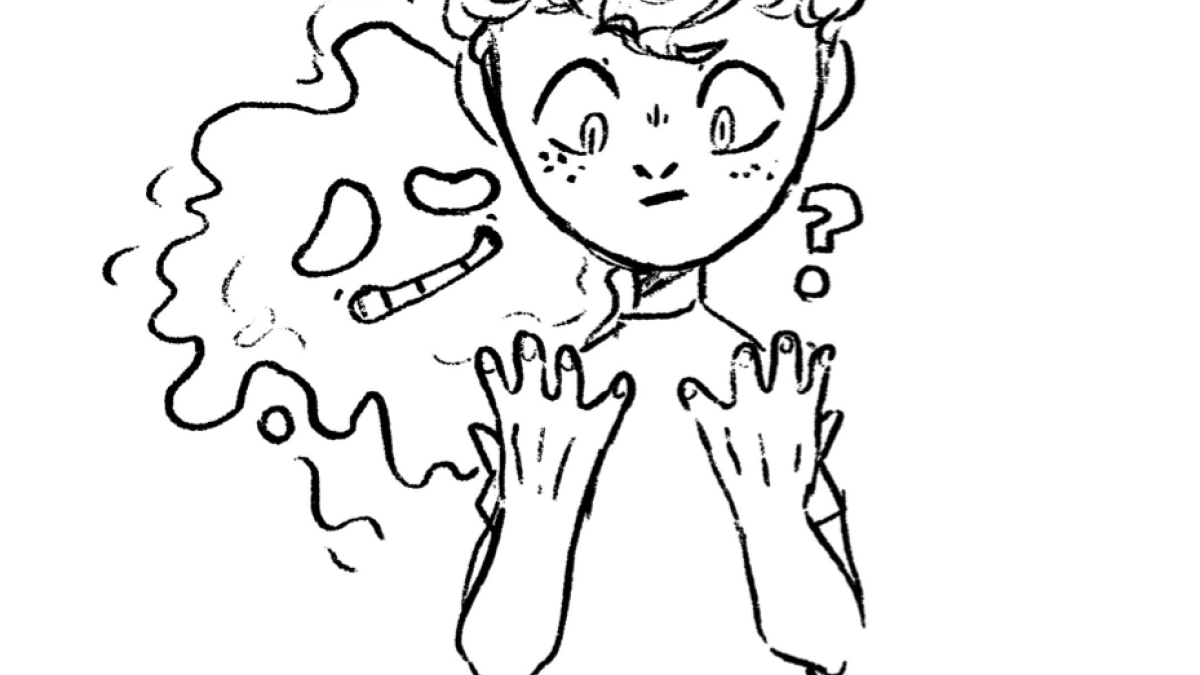Professors’ coloring book gives parents tools to help minimize kids’ COVID-19 anxiety

Illustration from "Georgie & the Giant Germ" by Maja Rosenblum-Muzik. Copyright 2020 Tender Press Books – All Rights Reserved. Used by permission.
Parents often struggle to explain certain things to their children. There are topics that can be embarrassing, like sex, or tougher situations, like the death of a beloved pet or divorce. But what about pandemics?
When the world found itself in the grip of COVID-19, a global wave of illness unseen in the lifetimes of almost every living person, resources for parents were few. That’s part of what motivated Paige Safyer, Sara Stein, Julie Ribaudo and Kate Rosenblum to create Tender Press Books and write a coloring storybook to help children cope with what they may see or hear about the virus and its effects.
Safyer, a new assistant professor at Arizona State University’s School of Social Work in the Watts College of Public Service and Community Solutions, recently completed her doctoral degree in social work and developmental psychology at the University of Michigan. This spring, Stein continues as a doctoral student there in social work and clinical psychology. Ribaudo and Rosenblum are both Zero to Thrive faculty at the University of Michigan.
This group teamed up to create the story coloring book “Georgie & the Giant Germ." Safyer said the book was created to support parents in helping their children make sense of the novel coronavirus and its implications, strongly felt by families at this time.
Safyer said that while still finishing her degree, she and Stein were working with families, some of whom were undocumented. They wrote a children’s book, along with Ribaudo, in English and Spanish to help the kids deal with the anguish of being separated from their mothers and fathers during the forced separations in 2018.
When the COVID-19 pandemic broke out earlier this year, that same motivation to help kids and families led to “Georgie & the Giant Germ,” which has now been translated into Spanish, French, German, Hebrew and Arabic.
The story is about a boy named Georgie, who learns about the virus and has questions for his mother, who gives calm, accurate, simple explanations that provide comfort and assurance. Georgie learns about the importance of thoroughly washing his hands to keep the germ at bay, about why he has to stay home and is unable to go outside and play with friends (“because it’s what we have to do until the germ goes away”) and how knowing about the virus can make you grumpy, even if you’re a grown-up.
Safyer said she and the authors knew what needed to be in the book but were challenged with taking the right tone.
“We all work clinically with kids, with young children,” she said. “But writing is awfully hard.”
Like many children’s books, this one looks deceptively simple. Yet, it is the product of decades’ worth of the combined knowledge of its authors.
“What’s unique about this book is that it’s using theoretical knowledge from the fields of developmental clinical psychology and social work. … It’s knowledge gained from 60 years of our collective clinical experience,” Stein said. “It has what we know, theoretically and empirically, (that) needs to be in there.”
Safyer said children think differently than adults. A child will often not have the language to be able to talk about feeling anxious or worried, but may be more able to identify body sensations such as, “my chest feels tight” or “my stomach hurts.” In the book, Georgie’s tummy ache is soothed by the hug of his mother.
Georgie’s felt sense of safety with his caregiver is a crucial theme of the book.
“Children need to feel safe even if there are scary things going on,” Safyer said. “Some parents are afraid to talk about scary things because they think their children aren’t aware of them. But they are.”
Stein said the book aims to help children acknowledge what’s causing them stress and help them to know that their caregivers are there to keep them safe. Reading the book to a child not only helps the child, she said, but it can help parents learn to explain things and to identify the feelings and worries in the child’s internal world.
The book’s illustrator is 12-year-old Maja Rosenblum-Muzik, daughter of Kate Rosenblum, one of the professors who collaborated on the book. Maja has a talent for illustrating beyond her years, Safyer said.
“We gave her a rough concept and she just took off with it,” Safyer said.
The book can be downloaded free here. More information is available here about Tender Press Books.
More Science and technology

Indigenous geneticists build unprecedented research community at ASU
When Krystal Tsosie (Diné) was an undergraduate at Arizona State University, there were no Indigenous faculty she could look to…

Pioneering professor of cultural evolution pens essays for leading academic journals
When Robert Boyd wrote his 1985 book “Culture and the Evolutionary Process,” cultural evolution was not considered a true…

Lucy's lasting legacy: Donald Johanson reflects on the discovery of a lifetime
Fifty years ago, in the dusty hills of Hadar, Ethiopia, a young paleoanthropologist, Donald Johanson, discovered what would…